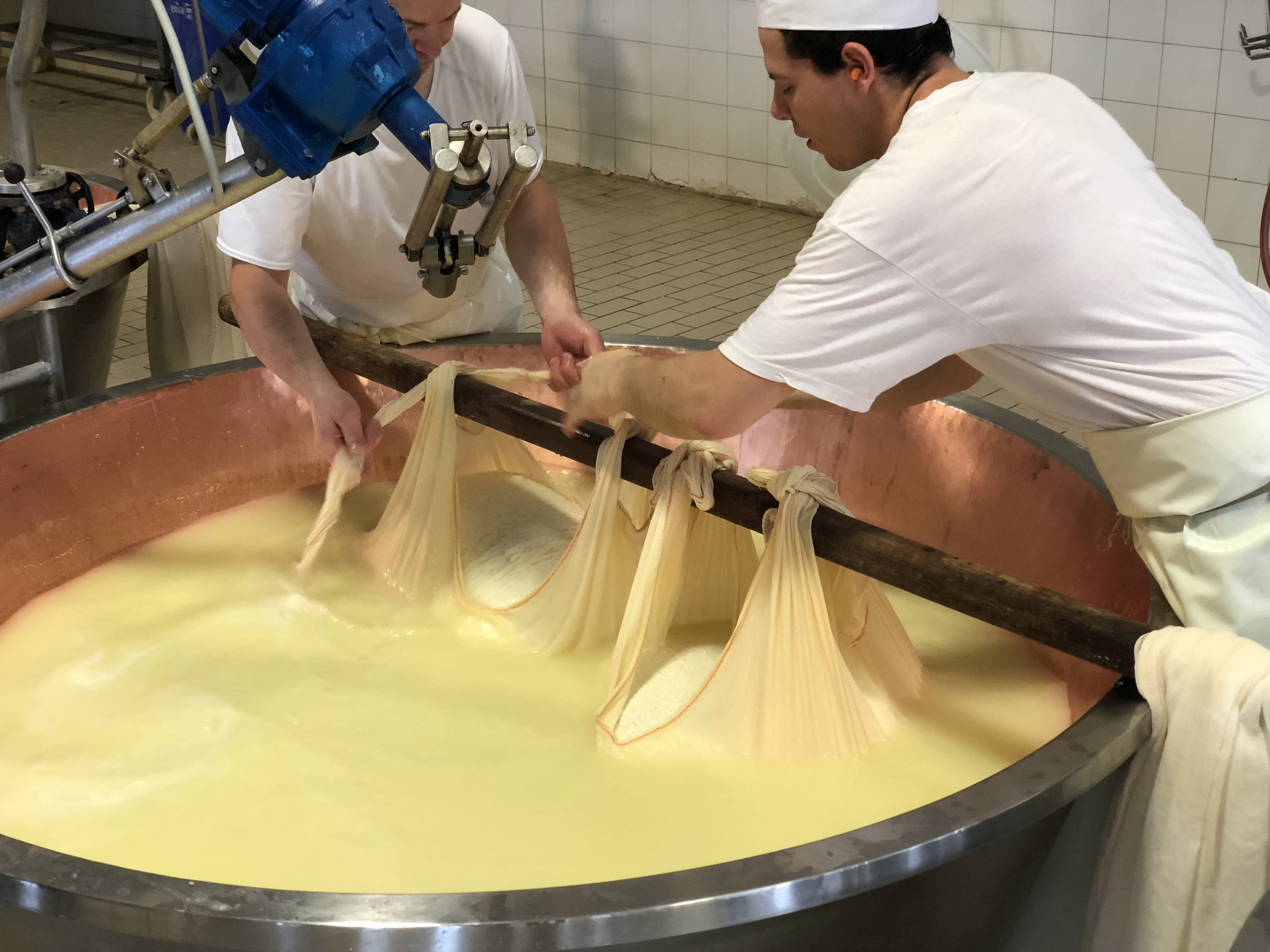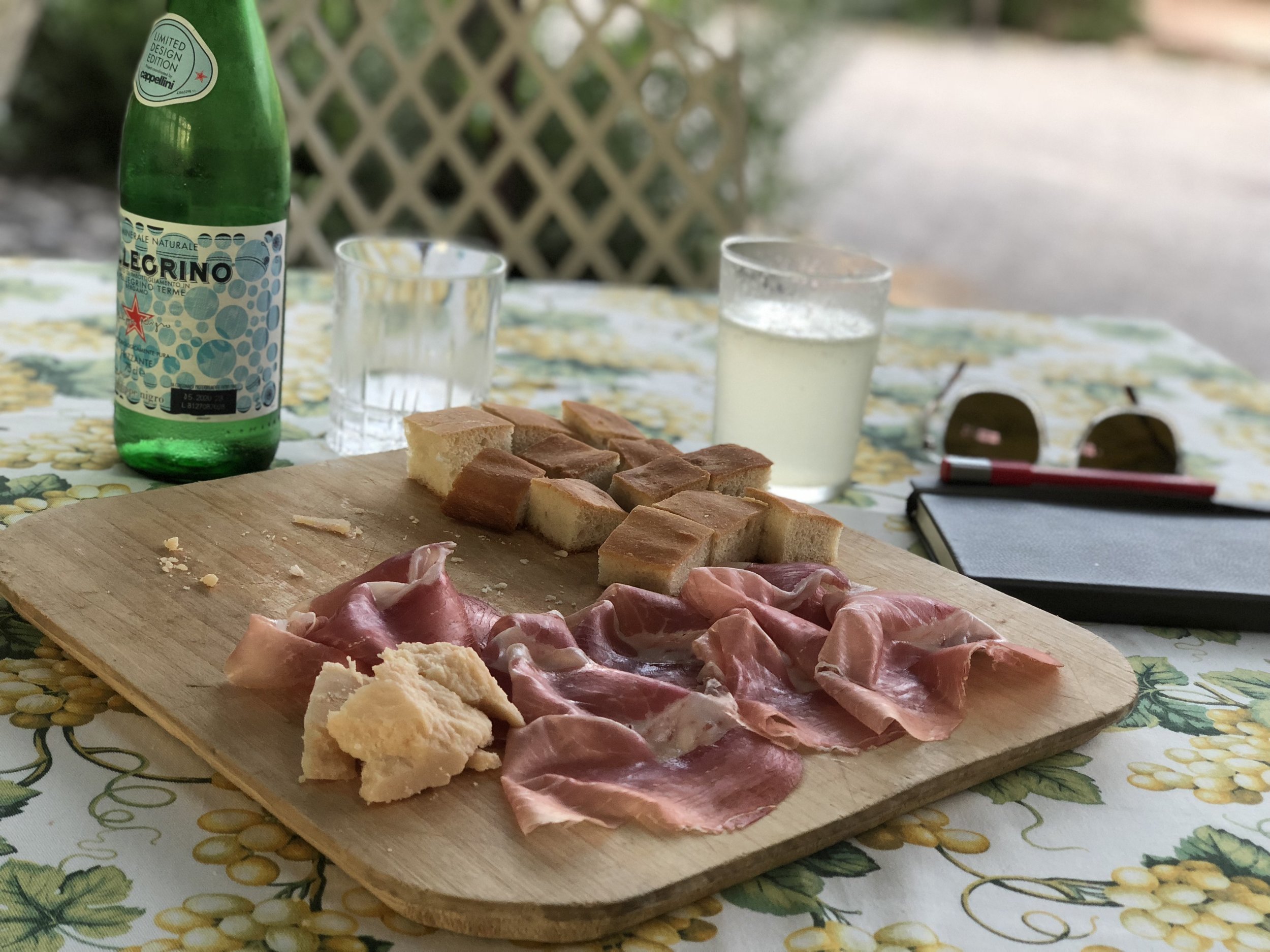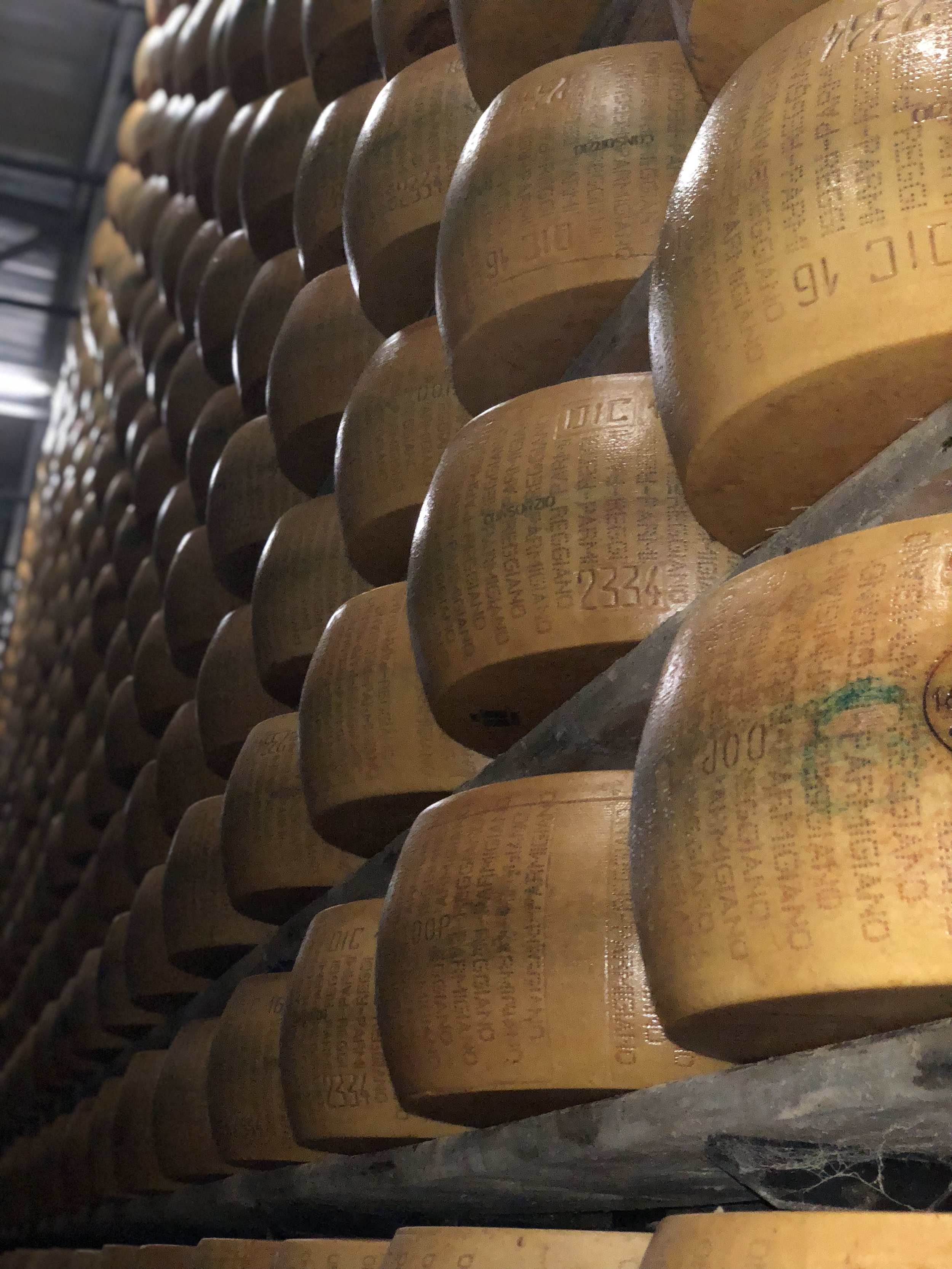An Italian Adventure - Part 1
Buon giorno di Parma!
You may have read recently that I'm cruising through Emilia-Romagna on a cycling/culinary tour. What you may not know is that I have never been to Italy before, but I'm lucky that my first trip has brought me straight to the heart of Italian artisanal craftsmanship. I'm in hog heaven right now, surrounded by classic delicacies like Prosciutto di Parma, Aceto di Balsamico and Parmigiana Reggiano, which are produced and heavily regulated for quality and to maintain age-old methodology.
I will be joining a group to serve as the lead chef for a culinary and biking tour, but I arrived a few days early to brush up on the region before I pretend to be a seasoned expert on Italian cuisine.
Day One
#RIPTony
Staying at the Antica Corte Pallevicina , which is a 14th century castle known for producing and aging of culatello, made from the butt of the black pig for gran culatello, and white pig for culatello tradizionale. The aging lasts from 24 months to 38 months in an ancient cellar where I stumbled upon a ham of Anthony Bourdain, our beloved culinary tour guide of the world.
When Kitchen Confidential was first released, I had just returned from the James Beard Awards where my father received the award in 1997 for American Regional Classics on behalf of the family restaurant. I was in the throws of dedicating my life to the kitchen and the art of cooking at the ripe age of 22. I read the book and saw inspiration and similarities in Tony’s life of debauchery and dedication in my own life having grown up in this crazy industry. It helped stoke the fire within my slow roasting loins that led me on this lifelong journey and fascination with food, but I'll share more details on the past another day.
Next I visited a dairy farm where I saw the grains and grasses fed to the cows before they are milked. The milk is then sent to the curdling houses where 1000 liters of milk is slowly steamed in copper kettles to form the small curds and turned into 2 wheels of Parmigiana Reggiano. From there the cheese is pressed then brined before it gets sent to the aging houses for a minimum of one year and up to 3 years before being sold off to the world.
After that, I went on to visit a a producer of Proscuitto di Parma in a small village up in the hills. Needless to say, the region lives for their swine (#respect). This process and aging is a dry then wet-ish brine before it is hung in cooler-temperature rooms and to its final resting place upstairs for minimum of one year. All of these processes follow the seasons of a year, coinciding with the climate changes that occur in the region from the slaughter to the dry aging (winter to summer).
While I'm saving burning serious calories for when it's time to ride a bike, the little Alfa Romeo I rented in Milan is getting a workout today. It took me to a vineyard to watch the making of Balsamico Tradizzionale before I parked it and went for a walk around Parma. I enjoyed a passeggiata through the very well-preserved town, making my game plan as I strolled its cobblestone streets and quaint alleys. Thanks, Parma, for a great first day. I'm ready to meet the group and begin this thing I came for: the bike tour.








